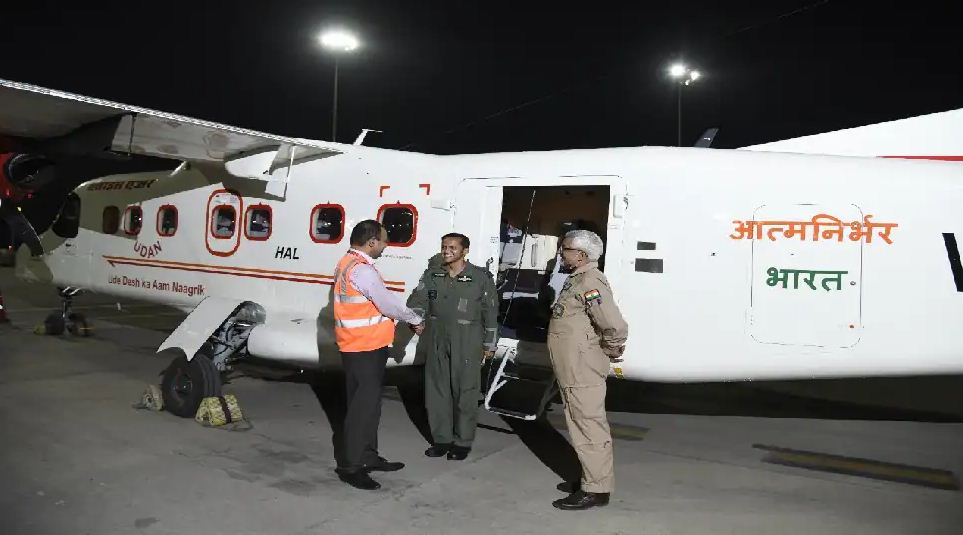The Modi government is pushing hard for AtmaNirbharta in the defence and aerospace sectors. The country achieved a milestone in this with the first flight of a Made-in-India HAL Dornier Do-228 from Dibrugarh, Assam, to Pasighat in Andhra.
This is the first step in the direction of developing an indigenous aircraft industry, which the country has been trying for last many decades.
According to the HAL, Dornier, 228 is a “highly versatile multi-purpose light transport aircraft, noting that the aircraft has been developed to meet requirements like that of utility and commuter transport, third level services and air-taxi operations, coast guard duties and maritime surveillance.
The Modi government is pushing for AtmaNirbharta in critical sectors like semiconductor, aerospace & defence and pharmaceutical APIs. In these sectors, traditionally India has been dependent on imports. During the Covid, supply chain disruptions led to many businesses getting impacted due to the non-availability of essential items like semiconductors and APIs.
Thus, the government introduced the PLI scheme for 14 sectors. Moreover, many new rules and regulations were introduced regarding the purchase by the government departments including the armed forces to prioritise Indian firms for purchase. The government is also providing grants and incentives to startups to develop products that are required by the government.
HAL has started developing aircraft required by the Indian armed forces. Dornier 228 is a twin-turboprop short take-off and landing utility aircraft, manufactured by Hindustan Aeronautics Limited (HAL) for the Indian Coast Guard, Indian Air Force and the Indian navy. A decade down the line, HAL may start developing commercial aircrafts like Boeing and Airbus.
The made-in-India aircraft can accommodate two crew members and 17 passengers. It has a wingspan of 16.97 m, an overall length of 16.56 m and an overall height of 4.86 m. The aircraft can be used for multiple purposes including aerial survey, pollution prevention, search and rescue, commuter transport, transporting troops, evacuation of casualties, cargo and logistics support among others.
For decades, India has been one of the largest users of military aircrafts given enemies on the Western and Eastern borders. However, despite such large uses of military equipment, the country has not been able to build an indigenous defence manufacturing industry, because the sector has been dominated by inefficient public sector units.
While the American defence industry gave rise to Silicon Valley (most of the modern information technology tools, from chips to the internet, trace their origins to funding by American armed forces), the Indian defence industry continued to be a liability to the public exchequer.
The Modi government is trying to improve the indigenous military equipment production system. Private companies are being involved, the ordnance factory board has been corporatised, DRDO and HAL are now run professionally.
The defence ministry started iDEX (innovation for defence excellence) has set up incubators (incubators provide basic infrastructure for startups to operate) and is allocating crores of rupees to these incubators to fund startups. 14 incubators have been established under the iDEX scheme, and crores of rupees are flowing to defence startups through them.
With the host of initiatives by the government and more specifically by the Ministry of Defense, the results of which will start becoming visible in a decade, India would not only become AtmaNirbhar in the sector but also emerge as a major exporter given economies of scale. The development of the Dornier Do-228 is a major step towards AtmaNirbharta in the defence and aerospace sector.
